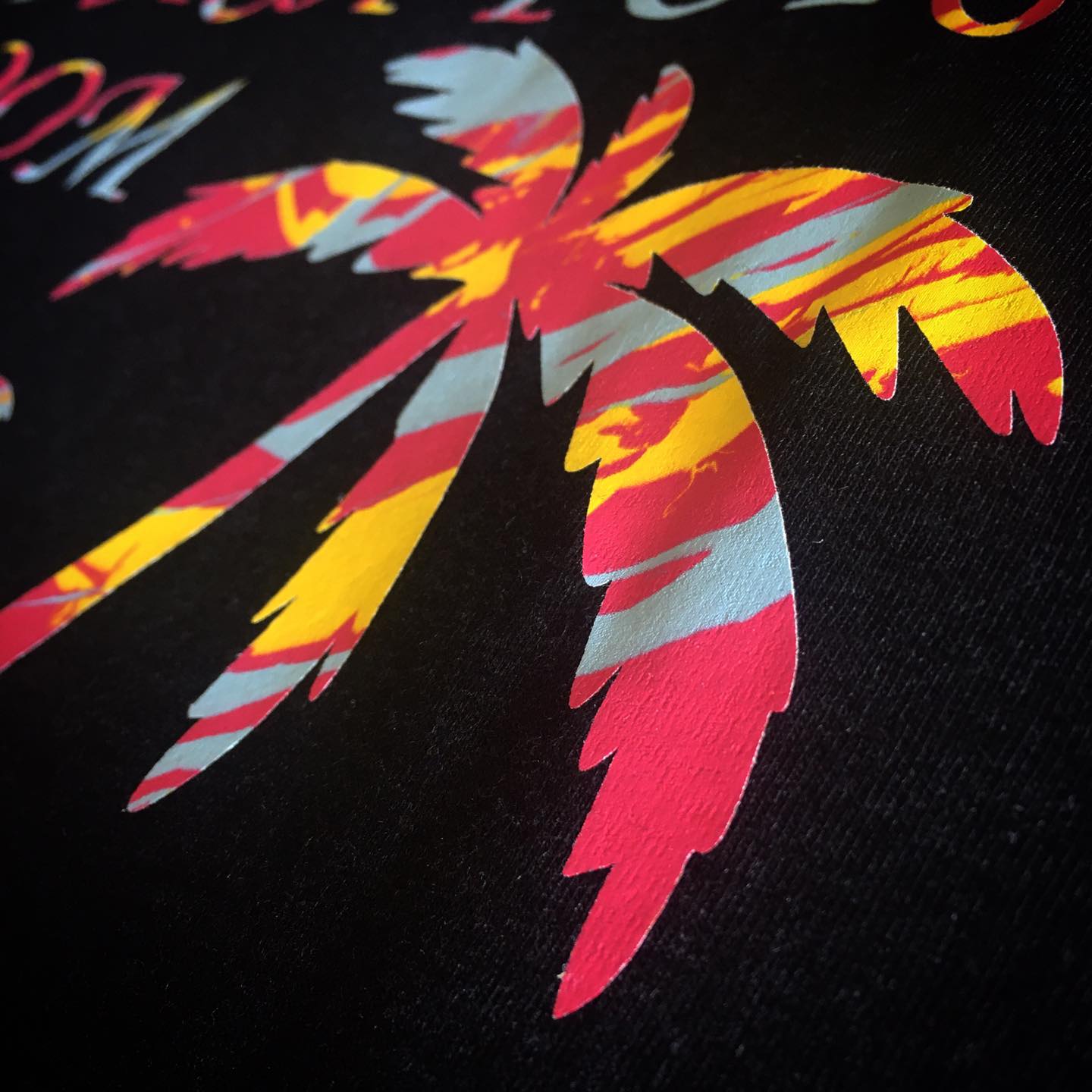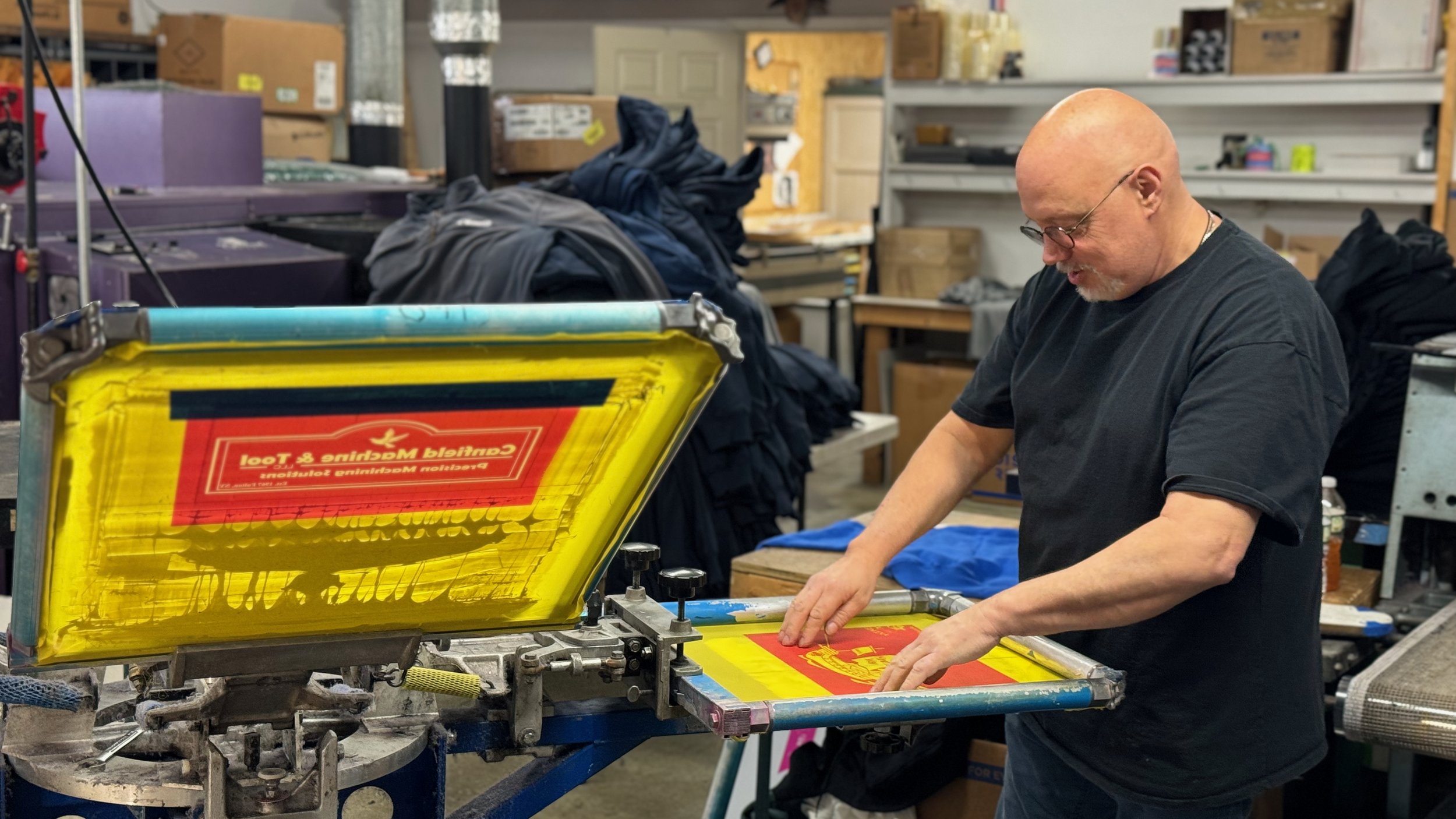Creative T-Shirt Printing Ideas for Small Brands
Display Printing Uncovered: Every Little Thing You Required to Learn About Tee Shirt and Garment Printing Strategies
Screen printing is an interesting method that combines art with technique, offering endless opportunities for imagination. Ready to check out the important elements that make display publishing an art form?
The Basics of Display Printing: Exactly How It Works
When you dive into display printing, you'll find it's both a science and an art. At its core, display printing involves producing a stencil, or screen, that enables ink to pass through only in specific locations (screen printing kit). You begin by picking your layout and preparing your screen with a light-sensitive solution. Once you subject this solution to light, it solidifies, leaving your style as a negative space.
Next, you'll mix your inks and prepare your printing surface. Position the screen over the material, after that make use of a squeegee to push ink via the screen onto the garment. This procedure needs precision, as you want clear, vibrant prints. After printing, you'll treat the ink with warmth, guaranteeing it sticks to the material and lasts through laundries. Each step is crucial, and grasping them will certainly elevate your screen printing abilities, transforming straightforward garments into distinct, meaningful items.
Sorts Of Screen Printing Techniques
When you understand the essentials of display printing, it's time to check out the various methods that can elevate your styles. One preferred technique is standard screen printing, where ink is pressed through a stenciled screen.
One more choice is plastisol printing, understood for its toughness and brilliant shades, making it a preferred for several brands. Experiment with halftone printing to produce slope effects and intricate styles.
Important Tools for Screen Printing
To achieve magnificent results in screen printing, having the best equipment is essential. You'll require a tough screen printing frame, which holds the mesh that transfers your style onto the garment. Next, spend in high-grade squeegees; these are crucial for applying ink evenly across the display.
Picking the Right Inks and Products
When selecting inks and materials for screen printing, you need to consider the type of ink that works finest for your task. Think of textile compatibility to guarantee your designs look last and terrific long. Check out eco-friendly ink choices to make your printing procedure extra lasting.
Kinds Of Screen Inks
Choosing the appropriate display ink is necessary for attaining vivid, durable prints that fulfill your task's demands. There are numerous types of display inks to take a look at. Specialized inks, such as glow-in-the-dark or metallic, can add special effects to your designs.

Material Compatibility Considerations
Understanding textile compatibility is important for accomplishing high-quality screen prints, especially because different materials respond distinctly to various inks. When picking inks, think about the fabric kind-- cotton, polyester, or blends. For cotton, water-based inks work well, providing soft qualities and breathability. Polyester, on the various other hand, typically calls for plastisol inks for much better attachment and lively colors. You might require to utilize a mix of both kinds if you're printing on blends. Always check your inks on sample material to ensure they adhere effectively and keep shade stability. Furthermore, maintain in mind that fabric weight and appearance can influence the last result, so picking the best ink and product combination is vital for your job's success.
Eco-Friendly Ink Options
Green inks are becoming a prominent choice for display printers who desire to lessen their ecological effect while keeping quality. When picking inks, take into consideration water-based inks, which are less unsafe and less complicated to tidy up contrasted to standard solvents. These inks bond well with textiles, delivering vibrant results without toxic chemicals. You might also discover eco-solvent inks that make use of less volatile natural compounds (VOCs), making them a much safer option for both your health and the planet.
In addition, seek inks made from renewable sources, such as soy or vegetable-based choices. By picking the ideal inks and materials, you'll not just develop sensational designs however likewise add to a more lasting printing process. Make the switch, and your prints will certainly mirror your commitment to the setting!
Preparing Your Design for Display Printing

Submit Style Needs
To ensure your style looks sharp and lively on textile, you'll require to pay close focus to file style needs for display printing. Make sure your style has a transparent background to prevent unwanted white sides on your prints. Maintain shade browse around this web-site settings in mind; CMYK is basic for display printing, so transform your RGB creates accordingly.
Shade Splitting Up Strategies
Shade splitting up is a necessary action in preparing your style for display printing, and grasping it can significantly enhance your print top quality. You'll need to damage your layout right into specific colors, as each color calls for a separate screen throughout printing. This precision not only guarantees accurate shade representation yet additionally streamlines the printing procedure.
Resolution and Size
Accomplishing the very best lead to screen printing starts with guaranteeing your style has the appropriate resolution and size. Preferably, your art work must go to the very least 300 DPI (dots per inch) for sharp, clear prints. Your final item might look less than professional and pixelated. if you use reduced resolution.
When it concerns dimension, take into consideration the measurements of your print area. Style your art work to match the final print dimension, preferably creating it in the real dimensions you'll be publishing. In this manner, you'll stay clear of any type of unforeseen scaling problems.
Always examine your design in both vector and raster formats. Vector graphics can be scaled without shedding quality, making them optimal for screen printing. pop over to this site Preparing appropriately will guarantee your layout looks impressive on every garment!
Step-by-Step Screen Printing Process
Display printing is a dynamic process that enables you to create vivid styles on different surface areas. To obtain begun, you'll require a display, emulsion, and your selected ink.
After rinsing the unexposed emulsion, your display prepares. Establish it up on your printing surface area and straighten your garment below it. Pour ink onto the screen and utilize a squeegee to push the ink through the pattern onto the fabric. Lift the display very carefully and allow the print dry. Cure the ink making use of warmth to ensure durability. That's it! You have actually successfully screen printed your layout.
Tips for Successful Display Printing Projects
While you're diving right into your screen printing jobs, bear in mind that preparation is essential to success. Begin by collecting all your products-- inks, garments, squeegees, and displays. A clean work area assists stop unwanted errors, so clean prior to you begin.
Next, validate your artwork is high-resolution and correctly sized for your garment. Test your display for proper direct exposure and tidy it extensively to avoid smudges. When blending your inks, adhere to the manufacturer's guidelines to achieve the appropriate uniformity.
During printing, apply also stress with your squeegee for consistent results. Don't hurry; take your time to confirm each print meets your requirements. After printing, let your garments completely dry completely before handling or packaging them.
Finally, constantly keep an example of your help future reference. By doing this, you can assess your development and improve your techniques with time. Satisfied printing!

Regularly Asked Inquiries
For how long Does It Take to Establish a Screen Printing Task?
Establishing up a screen printing job normally takes around 30 mins to an hour. You'll prepare the screens, mix inks, and change journalism. The time differs based upon complexity and experience, so stay organized!
Can I Print on Various Material Keys In Utilizing the Exact Same Method?
Yes, you can print on different material types using the same method, however you'll need to readjust your settings and inks. Some fabrics absorb ink differently, so experimenting assurances the very best results for each material.
What Prevail Mistakes to Avoid in Display Printing?
When screen printing, prevent typical look at these guys mistakes like utilizing the incorrect ink, neglecting correct exposure times, or missing pre-press checks. Constantly check your arrangement and maintain clean screens to assure top quality results each time.
Exactly How Can I Properly Tidy and Maintain My Display Printing Equipment?
To properly clean and maintain your display printing devices, you should routinely clean screens with suitable solvents, inspect mops for wear, and guarantee all tools are stored dust-free and dry. Consistency improves and protects against costly repairs performance.
Is Display Printing Eco-friendly Contrasted to Various Other Approaches?
Screen printing can be a lot more eco-friendly than various other techniques, especially if you make use of water-based inks and eco-conscious products. By choosing lasting supplies and methods, you minimize waste and reduce your impact on the world.
Screen Printing Uncovered: Everything You Required to Know About Tee Shirt and Garment Printing Methods
At its core, display printing involves creating a pattern, or display, that permits ink to pass via just in certain areas. Position the display over the material, after that make use of a squeegee to press ink via the screen onto the garment. One preferred approach is conventional screen printing, where ink is pushed through a stenciled display.When choosing inks and products for screen printing, you need to take right into account the kind of ink that works ideal for your job.